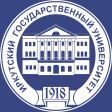List of issues > Series «Earth Sciences». 2025. Vol 52
Application of Machine Learning Methods to Forecast
Autumn Ice Phenomena on the Umba River
Alekseevskii N.I., Magritskii D.V., Mikhailov V.N. Antropogennye i estestven-nye izmeneniya gidrologicheskikh ogranichenii dlya prirodopol'zovaniya v del'takh rek Rossiiskoi Arktiki [Anthropogenic and natural changes in hydrological restrictions for nature management in the deltas of rivers in the Russian Arctic]. Vodnoe khozyaistvo Rossii: problemy, tekhnologii, upravlenie [Water management in Russia: problems, technologies, management], 2015, no. 1. pp. 14-31. (in Russian).
Frolova N.L., Magritsky D.V., Kireeva M.B. et al. Antropogennye i klimaticheski obuslovlennye izmeneniya stoka vody i ledovykh yavlenii rek Rossiiskoi Arktiki [Anthropogenic and climateinduced changes in water runoff and ice phenomena in rivers of the Russian Arctic]. Voprosy geografii [Geography Questions], 2018, no. 145, pp. 233-251. (in Russian)
Baklagin V.N. Zavisimosti kharakternykh dat ledovogo rezhima Belogo morya ot temperaturnogo fona nad ego akvatoriei [Dependences of characteristic dates of the White Sea ice regime on the temperature background above its water area]. Uspekhi sovremennogo estestvoznaniya [Achievements of modern natural science], 2020, no. 7-0, pp. 55-60. (in Russian)
Banshchikova L.S., Sumachev A.E. Variatsiya temperatury vozdukha kholodnogo perioda na Kolskom poluostrove kak faktor izmeneniya ledovogo rezhima [Variation of air temperature during the cold period on the Kola Peninsula as a factor in changing the ice regime]. Arktika: ekologiya i ekonomika [Arctic: ecology and economics], 2021, vol. 11, no. 3. pp. 397-405. (in Russian)
Vasilenko A.N., Agafonova S.A., Frolova N.L. Issledovaniya svyazi termicheskogo i ledovogo rezhimov rek Rossiiskoi Arktiki po dannym mnogoletnikh nablyudenii [Research of the relationship between thermal and ice regimes of rivers in the Russian Arctic based on long-term observations]. Trudy IX Mezhdunarodnoi nauchno-prakticheskoi konferentsii “Morskie issle-dovaniya i obrazovanie (MARESEDU-2020)” [Proceedings of the IX International scientific and practical conference “Marine research and education (MARESEDU-2020)”], Tver, 2020, vol. 2(3), pp. 98-101. (in Russian)
Georgievskii Yu.M. Kratkosrochnye i dolgosrochnye prognozy ledovykh yavlenii na rekakh, ozerakh i vodokhranilishchakh [Short-term and long-term forecasts of ice phenomena on rivers, lakes and reservoirs]. Leningrad, LPI Publ., 1986. 50 p. (in Russian)
Georgievskii Yu.M., Shanochkin S.V. Gidrologicheskie prognozy [Hydrological forecasts. St. Petersburg, RSHU Publ., 2007, 436 p. (in Russian)
Krastyn E.A., Fathi M.O., Panchenko E.D. et al. Zimnii rezhim prilivnykh ust'ev rek Terskogo berega Belogo morya [Winter regime of tidal estuaries of the rivers of the Tersky coast of the White Sea]. Chetvertye Vinogradovskie chteniya. Gidrologiya ot poznaniya k mirovozzreniyu [Fourth Vinogradov readings. Hydrology from knowledge to worldview], 2020, pp. 1092-1097. (in Russian)
Agafonova S.A. Vasilenko A.N., Mironenko A.A. et al. Ledovyi rezhim i ego opasnye proyavleniya na rekakh Arkticheskoi zony Rossii [Ice regime and its dangerous manifestations on the rivers of the Arctic zone of Russia]. Trudy V Vserossiskoi. Konferentsii “Ledovye i termicheskie protsessy na vodnykh ob"ektakh Rossii” [Proceedings of V All-Russian conference “Ice and thermal processes on water bodies of Russia”]. Moscow, Agricultural Academy named after. K.A. Timiryazeva Publ., 2016, pp. 15-21. (in Russian)
Agafonova S. A., Frolova N. L, Vasilenko A.N. et al. Ledovyi rezhim i opasnye gidrologicheskie yavleniya na rekakh arkticheskoi zony evropeiskoi territorii Rossi [Ice regime and dangerous hydrological phenomena on the rivers of the Arctic zone of the European territory of Russia]. Vestnik Moskovskogo universiteta. Seriya 5, Geografiya [Bulletin of Moscow University. Series 5, Geography], 2016, no. 6, pp. 41-49. (in Russian)
Smirnova D.A., Shishov A.A., Vasilenko A.N. et al. Osnovnye cherty zimnego gidrologicheskogo rezhima prilivnykh ust'ev rek Terskogo berega Belogo morya na primere rek Umba i Kuzerka [Main features of the winter hydrological regime of tidal estuaries of the rivers of the Tersky coast of the White Sea on the example of the Umba and Kuzerka rivers]. Trudy IX Mezhdunarodnoi nauchno-prakticheskoi konferentsii “Morskie issle-dovaniya i obrazovanie (MARESEDU-2020)” [Proceedings of the IX International Scientific and Practical Conference “Marine Research and Education (MARESEDU-2020)”], 2020, vol. 1 (3), pp. 94-97. (in Russian)
Ayzel G.V. Deep neural networks in hydrology: the new generation of universal and efficient models. Vestnik of Saint-Petersburg University. Earth Sciences, 2021, vol. 66, no.1, pp. 5-18. https://doi.org/10.21638/spbu07.2021.101
Reichstein M., Camps-Valls G., Stevens B. et al. Deep learning and process understanding for data-driven Earth system science. Nature, 2019, vol. 566, pp. 195-204. https://doi.org/10.1038/s41586-019-0912-1
Król A., Banasik K. Predicting Ice Phenomena in a River Using the Artificial Neural Network and Extreme Gradient Boosting. Resources, 2022, vol. 11, no. 2, pp. 12. https://doi.org/10.3390/resources11020012
Manning C.D., Raghavan P., Schütze H. Introduction to Information Retrieval. Cambridge University Press, Stanford NLP book, 2008, 544 p. URL: https://nlp.stanford.edu/IR-book/ (date of access: 22.04.2025)
Powers D.M.W. Evaluation: From Precision, Recall and F-Measure to ROC, Informedness, Markedness and Correlation. Technical Report SIE-07-001. 2007, 24 p. URL: https://www.researchgate.net/publication/228529307_Evaluation_From_Precision_Recall_and_FFactor_to_ROC_Informedness_Markedness_Correlation (date of access: 22.04.2025).
Kratzert F., Klotz D., Brenner C. et al. Rainfall–runoff modelling using Long Short-Term Memory (LSTM) networks. Hydrology and Earth System Sciences, 2019, vol. 23, no. 10, pp. 5089- 5110. https://doi.org/10.5194/hess-23-5089-2019
Ougahi J.H., Rowan J.S. Enhanced streamflow forecasting using hybrid modelling integrating glacio-hydrological outputs, deep learning and wavelet transformation. Scientific Reports, 2025, vol. 15, art. no. 2762. https://doi.org/10.1038/s41598-025-87187-1
Shen C.A. Transdisciplinary Review of Deep Learning Research and Its Relevance for Water Resources Scientists. Water Resources Research, 2018, vol. 54, no. 11, pp. 8558-8593. https://doi.org/10.1029/2018WR022643
Sit M., Demir I. Distributed deep learning model for flood prediction. Journal of Hydrology, 2019, vol. 570, pp. 524-534. https://doi.org/10.1016/j.jhydrol.2018.12.045
Sokolova M., Lapalme G. A systematic analysis of performance measures for classification tasks. Information Processing & Management, 2009, vol. 45, no. 4, pp. 427-437. https://doi.org/10.1016/j.ipm.2009.03.002
van Rijsbergen C. J. Information Retrieval. London, Butterworths, 1979, 208 p.
Nearing G.S., Sampson A.K., Kratzert F. et al. What role does hydrological science play in the age of machine learning. Water Resources Research, 2021, vol. 57, no. 3, art. no. e2020WR028091. https://doi.org/10.1029/2020WR028091
